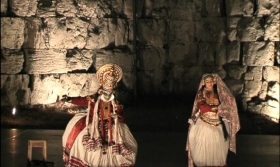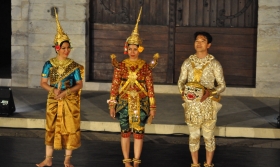- Japan
- For all
- 1238 vues
Shiro Daimon
Noh’s origins can be traced back to medieval Japan, specifically the 14th century. Originally a distinction was made between “real life” and “the unreal”, with pieces in the latter category featuring demons and spirits from the other world. However, the theatrical Noh tradition as we know it was founded by Kan’ami and Zeami, under the patronage of noble aesthetes, and represented a break with religious ceremonies. Henceforth, Buddhist themes were used primarily for their aesthetic potential.
Some useful information to bear in mind:
- Masks are an essential element of Noh, which allow the audience to identify the different characters. Postures and voices are often identical, meaning that the mask is the only way to distinguish between a young girl and an old man.
- Minimalist expression: although it seeks to capture the essence of reality, Noh pays no heed to realism and can often appear purely symbolic, with no overt expressions.
Mai: this art of walking, a fundamental influence on Noh, is a form of dance based on spinning movements and whose gestural vocabulary is simple and stripped back, with very few variations. The dramatic tension is derived purely from the rhythm of the movements.
Noh was historically performed outdoors, often within shrine compounds.
This performance is presented by Shiro Daïmon, a student of some of the great Noh masters.
Distribution and legal informations
Moon, ritual theatre dance with mask
Sun, a musical performance
Dancer: Shiro Daïmon
Musician (percussion): Michel Haze
Photos credits : Maurice Melliet
More informations
- Place of capture : Musée Vesunna
- Collection : Mimos 2010








